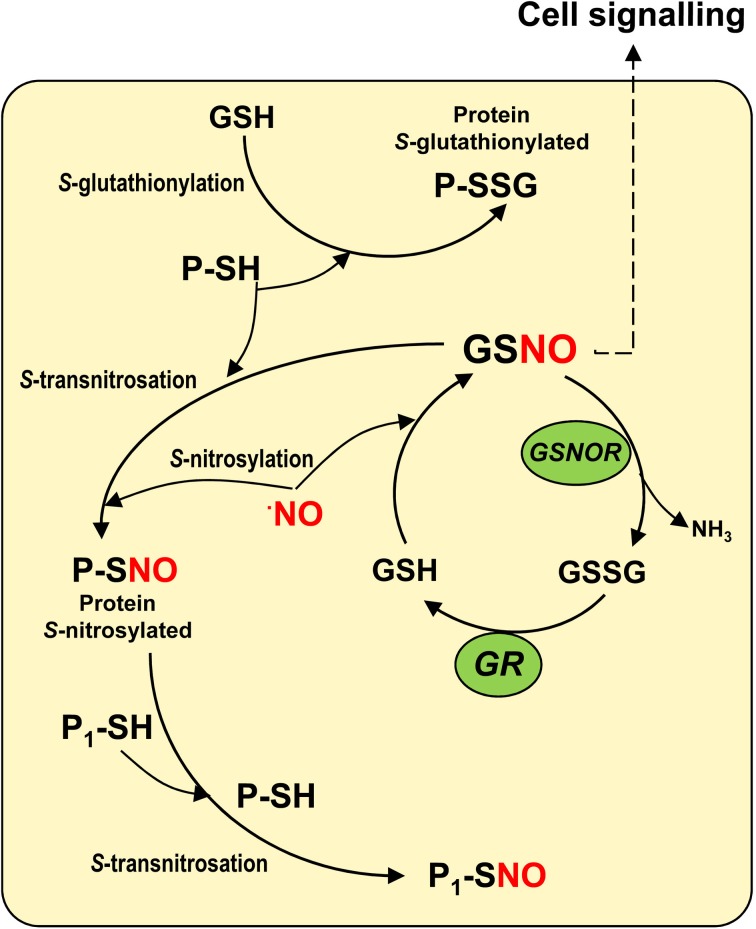Figure 1.
Model of the S-nitroglutathione (GSNO) metabolism in cells. The interaction between reduced glutathione (GSH) and nitric oxide (NO) enables GSNO to be generated by a process of S-nitrosylation. GSNO could be decomposed by the GSNO reductase to oxidized glutathione (GSSG) which is the substrate of the glutathione reductase (GR) that regenerates the reduced glutathione. GSNO, regarded as the most abundant low-molecular mass (LMM) S-nitrosothiol, can interact with specific sulfhydryl (-SH) groups of proteins to produce high-molecular mass (HMM) S-nitrosothiols in a process called S-transnitrosation (Hogg, 2002). HMM S-nitrosothiols can also transfer NO to the sulfhydryl (-SH) groups of other proteins (P1-SH) through a process of S-transnitrosation between proteins. On the other hand, GSH can interact with specific sulfhydryl (-SH) groups of proteins in a process known as S-glutathionylation.

